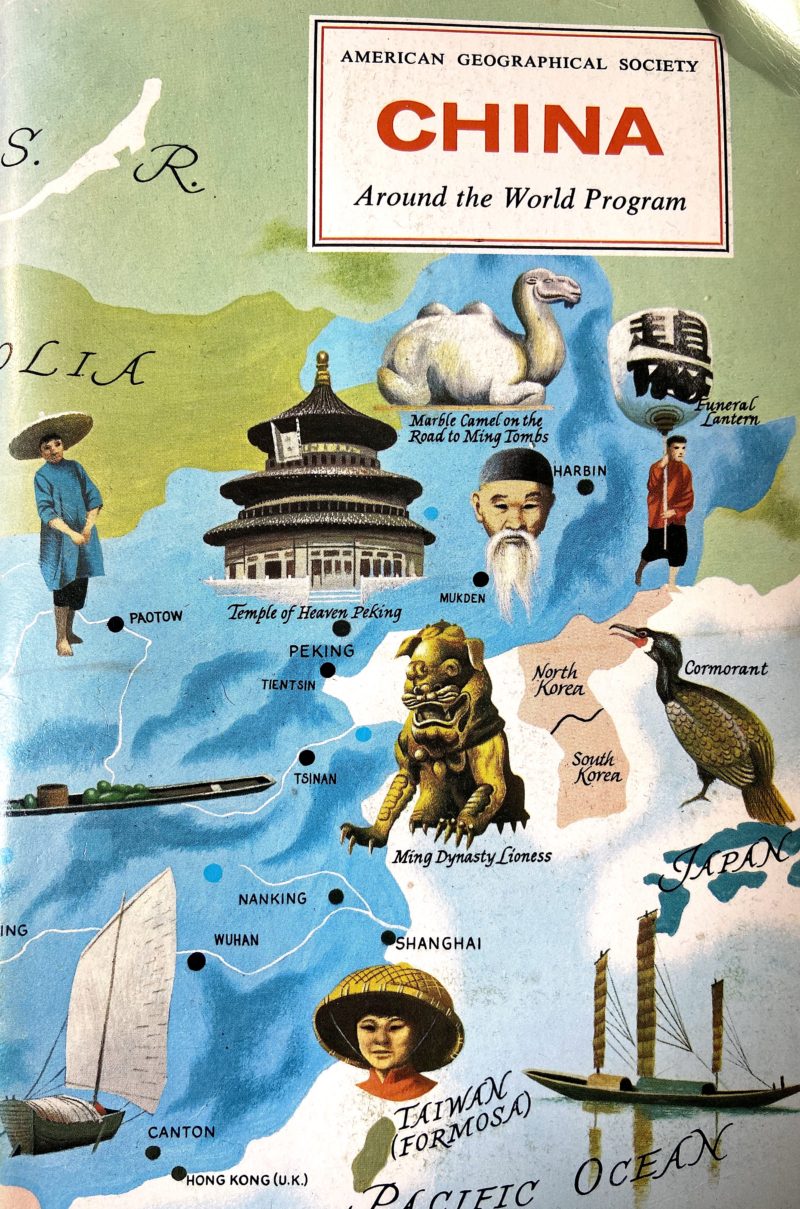In a recent posting, I took a look at the Taiwan volume in an old series of colorful books called the “Around the World Program” published by the American Geographical Society. After discussing the series as a whole, I suggested that some of the most interesting features of the Taiwan volume (1968), specifically, was its lack of interest in the ethnic and linguistic diversity of the island, and the way in which it seems to minimize any engagement with the political context of Taiwan’s history and society, with its boldest critique of its dictatorship being to admit that it was “not so democratic as some may wish.”
Out of curiosity, I returned to ebay to order an old copy of the China volume in the series, published in 1972, the same year as Nixon’s visit to China that February. What would the volume have to say of the Chinese government in the depths of the cold war, but at a transition point in US relations with China?
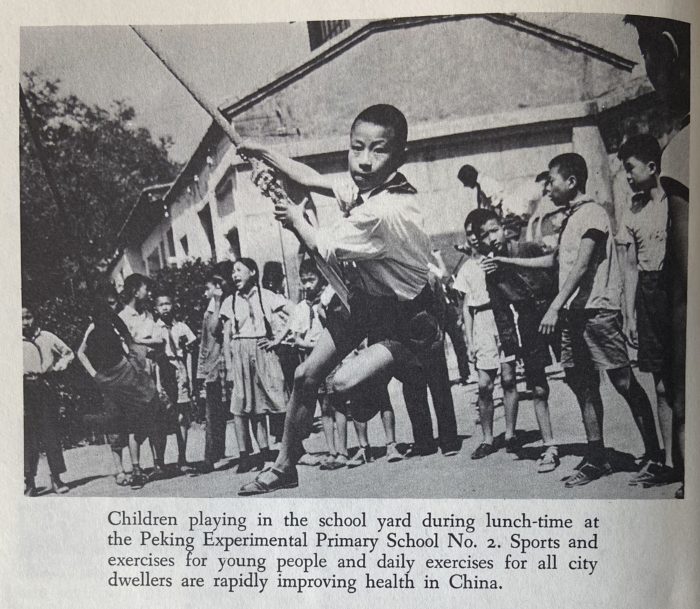
It is primarily the images and maps of the book that give a geographical or anthropological feel. The text of the book is largely built around a chronological narrative, open with a tired reference to Napoleon’s warning about China as the sleeping giant, and taking us on a whirlwind tour from the Shang dynasty to the present. There are lots of the usual patronising, or stereotyped depictions, sometimes couched as compliments, but this doesn’t exactly make a work of this time (or our own) stand out as unique.
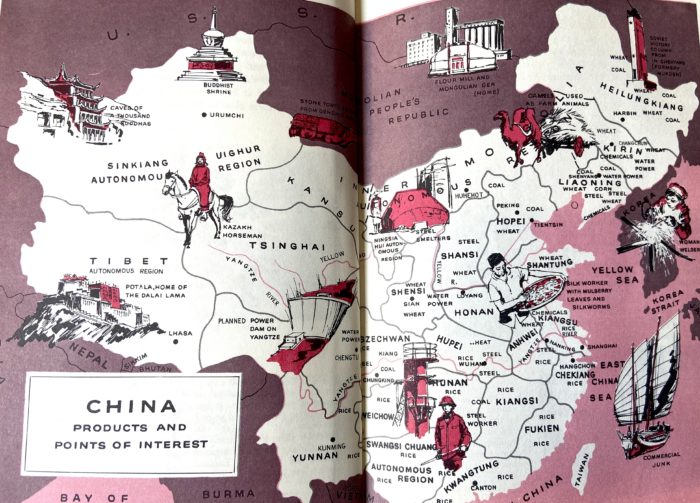

The narrative of China’s modern times is fairly straightforward. A critical overview of Western imperialism in China, Sun Yat-sen and the founding the republic, and an admission of the failures of the Nationalist government, which “did not really represent the people, nor was it successful in promoting democracy…” It continues with criticism of the corruption of the nationalist government during the second Sino-Japanese war, which “made no attempt to improve conditions for the farmers…” In contrast, the Communist-held areas, “fared somewhat better” where “everyone was poor, but equally so.” In 1946 “the civil war behan between Nationalist and Communist armies, and the exhausted, ill-fed, disillusioned people refused to support the government any longer. Thousands of government troops surrendered to the Communists with their modern American trucks and arms, and in 1949 the People’s Republic of China was set up in Peking.”
The narrative then abruptly switches to Taiwan to track Nationalist rule there and noting the 1971 loss of its control of the United Nations seat for China, ending with the ominous observation, “the question of who will finally control the island is still unfinished business.”
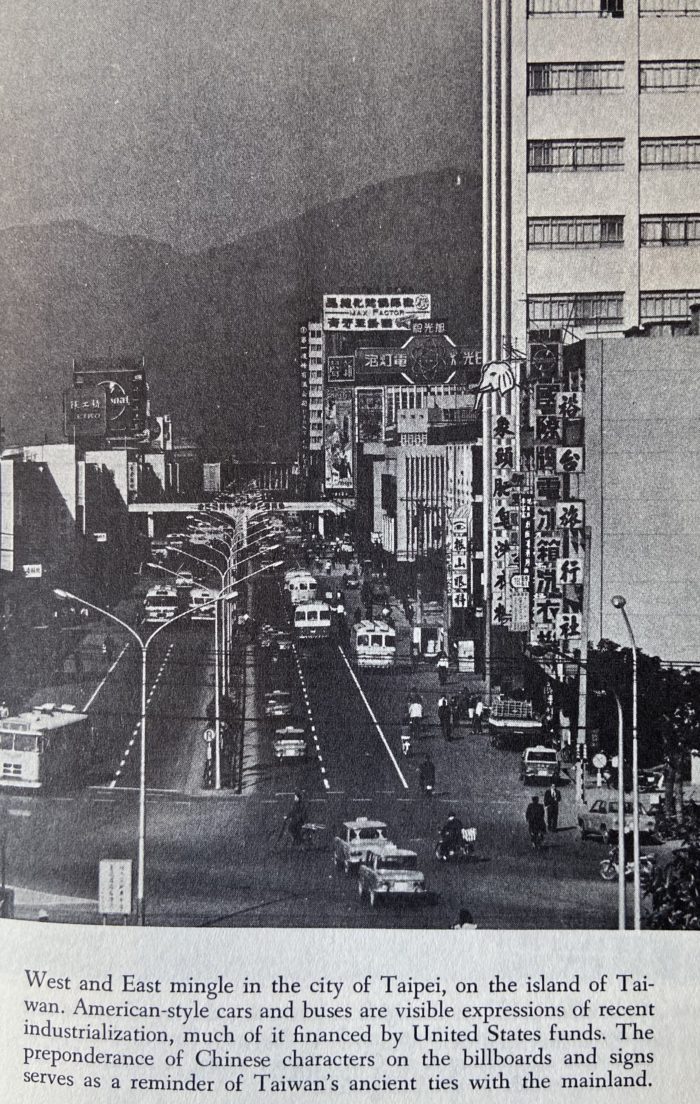
What really stands out in this volume, however, is the section on post-1949 PRC history. It opens with a short overview of the plucky Mao, and the lesson he learned during his time underground, “work for the interests of the poor people, especially the peasants, since they are the majority of the population.” In everything that follows we see the same “optimistic, modernist tone” that Janice Monk has argued is a feature of the series as a whole, regardless of the specific challenges of the country under examination.1. Lots of details on infrastructural development under Communist rule follow, including great strides in agriculture, mining, industry, and education.
From our present 2020 view, the moment that stands out most in this narrative, comes on page 50:
“If the weather is bad, as it was in the years 1959, 1960 and 1961, people just tighten their belts and use less, hoping there will be no famine, that the weather will improve soon, or that grain will be brought to their region from some luckier part of the country or from abroad. During those three years China suffered very severe droughts in both the rice-growing south and the wheat-growing north, but as a result of tight government control there was no widespread starvation. This showed what the Chinese could do in hard times, and it also showed how important it was to expand farm production rapidly.”
Here is the “three years of natural disaster” or “three years of difficulty” explanation, attributing to adverse natural causes any “belt tightening” that might have been required at the time. The Great Leap Famine, which resulted in the deaths of tens of millions of Chinese thanks to a combination of catastrophic government agricultural policies was a devastating low point for the regime. Here, we are assured that, thanks to “tight government control” there was “no widespread starvation” – which is almost an exact inverse of the truth.
Beyond memoirs of those who visited China I’ve not read widely in publications on China from this period written by foreigners and in the global press, so I can’t say anything about how unusual this presentation of this CCP standard line is for its time beyond the writings of enthusiastic fellow travellers.
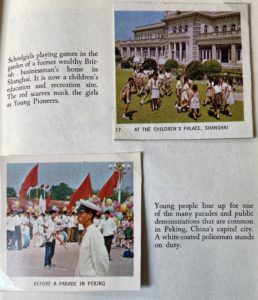 More generally, however, this book shares with its Taiwan volume counterpart an uneasiness about lingering too long on awkward observations about political realities that stray from its, “things are getting better all the time” general message. Its section on the operations of the government admits that Party control is “far-reaching; in fact, there seems no part of life that is beyond it.” After explaining how the National People’s Congress is elected, it notes, without further comment, that they gather to “approve laws recommended” to it by the party.
More generally, however, this book shares with its Taiwan volume counterpart an uneasiness about lingering too long on awkward observations about political realities that stray from its, “things are getting better all the time” general message. Its section on the operations of the government admits that Party control is “far-reaching; in fact, there seems no part of life that is beyond it.” After explaining how the National People’s Congress is elected, it notes, without further comment, that they gather to “approve laws recommended” to it by the party.
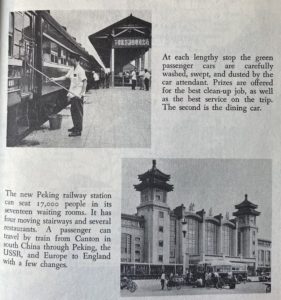 It is the absences that are most striking. Perhaps because children are one target audience or some other desire to avoid spoiling the mood, violence finds no explicit mention anywhere in the volume. Even the section on the war against Japan merely notes that people became impoverished and refugees fled west. It is acknowledged that the Cultural Revolution (still technically ongoing at publication of this volume) was “an important event” that involved the “purge” of some of the party leadership, but the closest we get to mention of violence is that there were two years of “virtual chaos.”
It is the absences that are most striking. Perhaps because children are one target audience or some other desire to avoid spoiling the mood, violence finds no explicit mention anywhere in the volume. Even the section on the war against Japan merely notes that people became impoverished and refugees fled west. It is acknowledged that the Cultural Revolution (still technically ongoing at publication of this volume) was “an important event” that involved the “purge” of some of the party leadership, but the closest we get to mention of violence is that there were two years of “virtual chaos.”
The final paragraphs of the book focus on China’s changing role on the world stage. “In the world arena one of China’s primary goals has been to challenge the power and leadership of the Soviet Union in the Communist realm,” and, bringing the book to a close, you’ll be glad to know that “China’s explosion of an atomic bomb…and the launching of an artificial earth satellite…were proof of what a poor backward country can achieve in twenty years, if the people are willing to work hard. Indeed, China’s achievements since the revolution show that it must be recognized as one of the great powers of our time.”
Janice Monk, “Women’s Worlds at the American Geographical Society” Geographical Review 92.2 (2003) ↩
